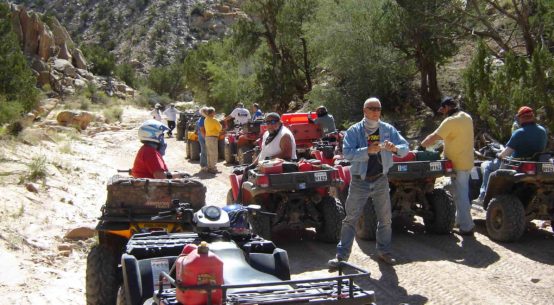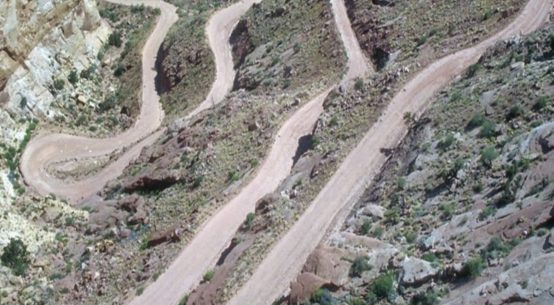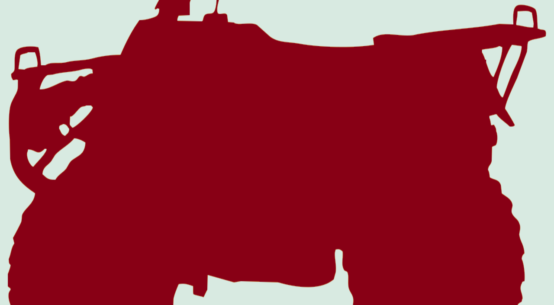
Where and When NOT to Ride Your ATV
One of the first questions I asked was “Where can I ride my ATV?” The initial answer I was given was wrong. I was told, “Just about any place.” However, I did some research on where “any place” was, and soon discovered that there are many places where ATVs are not welcome.
The fact is, one of the biggest problems in the OHV community today is that too few of us don’t research where it is legal and permissible to ride. Too many of us depend on word of mouth to find our riding venues with no consideration of the legality of the ride. Just a point of definition here. The term OHV (Off Highway Vehicle) also known in some areas as an ORV (Off Road Vehicle) applies to any vehicle that is not legally licensed to operate on standard public thoroughfares. This would include All Terrain Vehicles (ATVs), some Motorcycles, Mini Bikes, Dune Buggies, Go-Carts, and any other motorized form of conveyance not legal for street use.
This is a typical scenario of OHV irresponsibility and community disaster:
A person may be riding down the road and see a couple OHVers out having fun and assume that these OHVers knew it was okay to ride there, so they pull the machine, out of the back of the pickup, and try the area out. They see no signs that tell them that OHVs are welcome, they just go out there and ride. This illegal act is multiplied by yet another person who sees them out there riding in an area that is not posted as open to OHVs and before long word of mouth spreads about this great place to ride. The property owner will discover his property is being used without permission and spends the money to put up a sign. Some hot shot who thinks that there is some kind of imminent domain on OHV trails decides that the landowner has no right to close off a perfectly good OHV trail, so he illegally removes the sign and continues his sport in defiance of the law. The illegal riding is only one aspect. The noise made by the riders is a quite another. These illegal riding venues are typically near residential areas and it is not long before the police are called in to chase off the trespassers. The whole thing can spiral out of control until laws are passed restricting use of OHVs in the community as a whole.
Private property is not automatically open to OHV use. According to Utah Law, public and private property must be posted open in order to be legally used. If property is posted as “no trespassing” it may be considered criminal trespass, which (I believe) is a third degree felony. The penalties for these activities are not cheap. A fine of up to $5,000 can be levied by public land managers, and private property owners can sue a guilty participant for the costs to restore any evidence of there having been OHVs on their property, even if they were not the only OHV to ever use such property. That could get mighty costly. Think in terms of millions of dollars, potentially.
National Forests and BLM lands publish maps showing which areas are open for OHV use. Some will specify which type of OHV, be it ATV, Motorcycle, or Jeep that are permitted on a particular path trail or road. Single track paths are generally restricted to motorcycles, and mountain bicycles. Double track narrow (less than 52 inches) paths are generally restricted to ATVs and motorcycles. Wide double track paths that require high clearance vehicles are open to Jeeps (generically) ATVs, and motorcycles. All of these paths and trails may be open to mountain bikers, horsemen, hikers, snowshoers, and cross country skiers. Many forest roads are open to all motorized vehicle use. However, in some jurisdictions (depending on the interpretation of the particular district ranger or land manager) any forest road that would also accommodate a high speed low clearance vehicle, such as a family car, are not deemed open for OHV use. This is referred to as “Conflict of use.” Each road that is open for use must be posted as open for such use to be free from prosecution under the laws of the State of Utah.
It is pure foolishness for an ATVer to attempt a single track trail. There are perfectly good reasons why single track trails exist. The best reason is that the terrain simply does not support the existence of a double track trail for ecological reasons, or for personal safety reasons. A trail may have miles of single track that would work for an ATV, but at the higher elevations there is only 12 inches worth of trail along a ridge line that make it impossible to traverse on an ATV. These trails, no matter how tempting and beautiful they may be, should be left for the single track players. It is similar folly for Jeepers to attempt to widen out a narrow double track trail simply because there must have been a jeep up that trail at some time in its existence.
When is an Open Trail Not Open?
One of the single biggest objections that is raised against the use of motorized vehicles on public lands is the increased erosion that such use appears to have caused. In many cases the erosion is not so much due to the use of the motorized vehicle, as it is due to the poor construction methods used when creating a logging or mining road in the first place. Too often when constructed, trails lack frequent and appropriate diversion channels or drainage pipes that would limit the road or trail from becoming a mountain run off stream bed. Never the less, damage that occurs during the use of such areas during muddy periods is obvious to anyone. This damage can be simply avoided by just doing something else during the wet and fragile periods of the spring and fall. When it rains, just pull over and wait for it to stop and dry out a bit. So it may delay your ride for an hour or so. It is better to be good stewards of our public lands, than to be an excuse to have them closed.
One of the primary reasons why this web site exists is to share legal and documented open trails with other riders so that there is no community outcry against the use of ATVs and OHVs generally.
OHVs Not Welcome
Unfortunately the scenario identified above is all too common. There are specific problem areas that deserve our attention to avoid. These may be places that you personally know of, that have been used by ATVs and Motorcycles since they were invented. It would only stand to reason that they are still open for use…. NOT SO! The legal remedies set forth above may be applied to anyone who wishes to test the resolve of the property owners or managers to enforce with the full remedies of the law.




